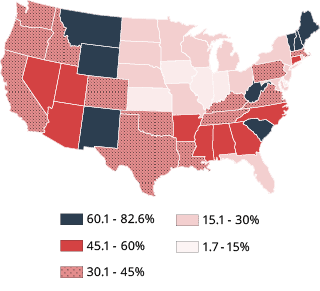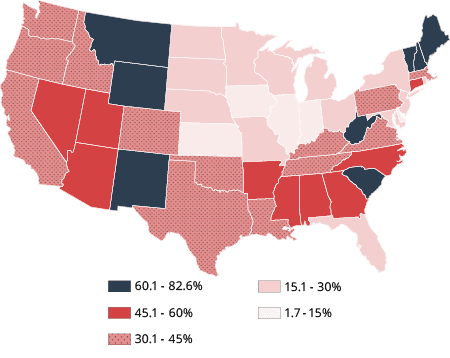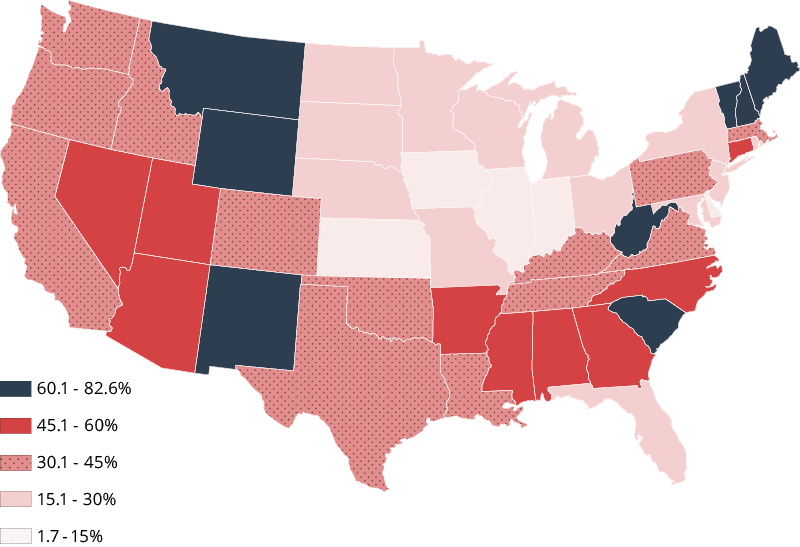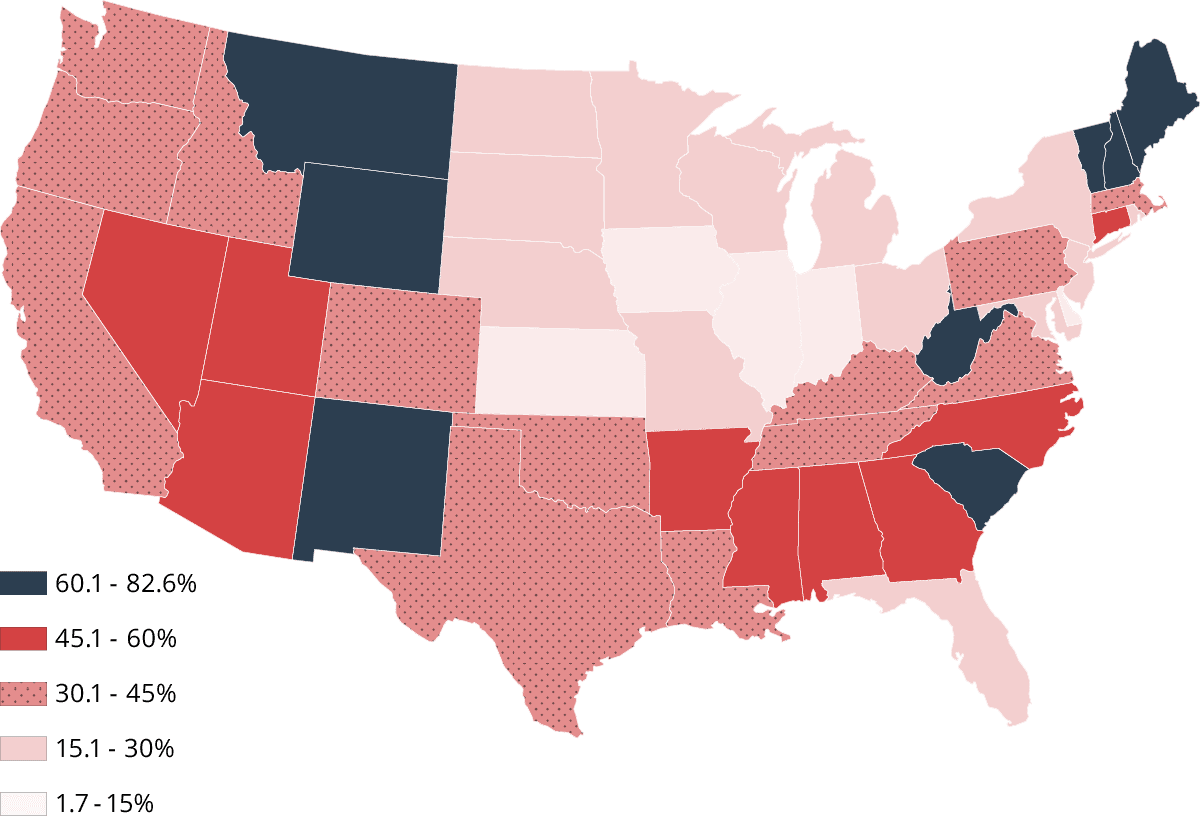While the wildland urban interface (WUI) is a term commonly known in areas that experience wildfires, it may not be common to your fire department.
You may believe that you don’t have a WUI problem, and that WUI fires only occur in western states, but here are the facts:
More than 60,000 communities in the United States are at risk for WUI fires.
Between 2002 and 2016, an average of over 3,000 structures per year were lost to WUI fires in the United States.
The WUI area continues to grow by approximately 2 million acres per year.
Sources: National Association of State Foresters PDF, U.S. Department of Homeland Security and National Institute of Standards and Technology
States with the greatest number of houses in the WUI:
- 1. California
- 2. Texas
- 3. Florida
- 4. North Carolina
- 5. Pennsylvania
Number of houses in the WUI relative to the total houses in the state* (%)




*For states in the conterminous United States.
Source: U.S. Forest Service
As the WUI continues to grow, these fires will become an increasing problem for fire departments across the country.
In your area, you may have brush fires, grass fires, forest fires or outdoor fires. These fires can have the same impact when they occur close to homes, neighborhoods and communities. Communities need to understand the risks and make changes to their environments to make them less susceptible to fire.
